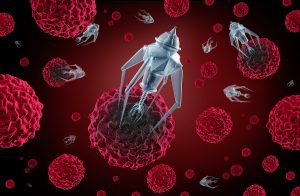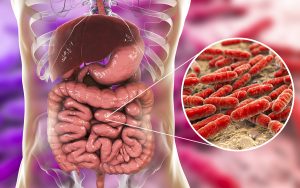It can be confusing to see that various countries have big differences in cancer rates, but here I am giving some reasons for variations in cancer rates.
The following countries have high cancer rates: Denmark, France, Belgium, United States, Hungary, Ireland, New Zealand, Australia.
These countries have low cancer rates: Niger, Yemen, Oman, Nepal, Mauritania, Gambia, Cape VerSe, Bhutan. These are only samples; it is not a complete list.
Short life expectancy in many low cancer rate countries
People in many low cancer rate countries do not live long lives because of parasitic infestations, bacterial infections and AIDS. Life expectancy in Gambia, for instance is only 61.15 years. People in Yemen suffer from malnutrition and the life expectancy is only 64.95 years. One can make an argument therefore that people do not live long enough to get a lot of cancer. Cancer is a disease of the older population, as DNA mutations, shorter telomeres, and loss of mitochondria in older cells cause many cancers.
These three countries have various cancer rates
Low cancer rates in India
India is one of the countries with lower cancer rates when compared to the US. Scientists have pointed out that 40% of Indians are consuming vegetarian diets without meat; (red meat consumed in high amounts like in the US is carcinogenic). India has some of the highest spice consumption in the world. We know that curcumin, for instance, has cancer-preventing qualities. You could say that Indians inadvertently treat themselves with herbal, non-toxic chemotherapy (curcumin and others spices) before a cancer even occurs. On the other hand India is a nation with high consumption of refined sugar, which is a factor that can cause cancer over a long period of time. The life expectancy in India is only 68.56 years, which skews the statistics towards lower cancer rates when one compares India to countries with a life expectancy of 80.0 years.
Why is Denmark a high cancer rate country?
The biggest factors are a reliable cancer reporting system, but also a high smoking rate among Danish women and high alcohol consumption in the Danish population. See below what these factors do.
Why is Oman a low cancer rate country?
A study done in Oman showed that a lot of people do not know that certain risk factors could be changed to lower the present cancer incidence. Cigarette smoking, passive smoking, excessive alcohol consumption, reduced intake of fruit and vegetables, increased consumption of red meat and processed meats, infection with HPV, being overweight, less physical activity and an age above 70 are all risk factors for cancer. At the present time Oman still compares favorably with the US, as there is less obesity in Oman. But the average person still eats fairly healthy with an emphasis on fruit and vegetables.
Increasing cancer rates in Oman
The cigarette consumption per year per person in Oman is 271.1 versus 1016.6 in the US. The life expectancy has increased from 50.47 in 1970 to 77.03 in 2016. Oman is expecting the cancer rate to double by the year 2030 due to the increasing life expectancy and lifestyle factors (more drinking, smoking and gaining weight from junk food). A lot of the differences in the cancer rates between the US and Oman are simply due to lifestyle differences.
Cancer risk factors analyzed
What do the various cancer risks mean in terms of cancer development?
Cigarette smoking
About 480,000 premature deaths are caused by cigarette smoking in the US. This is due to a combination of cancer, heart attacks and strokes. Smoking causes cancers of the lung, esophagus, larynx, mouth, throat, kidney, bladder, liver, pancreas, stomach, cervix, colon, rectum, but also acute myeloid leukemia.
Passive smoking
Passive smoking is as bad, if not worse than smoking. This reference explains that a passive smoker has double exposure to cigarette smoke, namely to the smoke from the smoker, but also to the direct smoke from the burning cigarette. This means that a passive smoker may have exposure to a higher concentration of carcinogens than the smoker!
Excessive alcohol consumption
Heavy alcohol consumption introduces a cell poison into your body. If you drink more than 8 drinks per week as a woman or more than 15 drinks per week as a man, you are a heavy drinker. It leads to cancer of the mouth, esophagus, throat, colon, liver, breast and prostate. The data on prostate cancer is somewhat weaker.
Reduced intake of fruit and vegetables
Consumption of fruits and vegetables, but also foods high in fibre are known to reduce the risk of cancer. So, when you lower the intake of fruits and vegetables, you have less of a cancer protective effect, which leads to more cancer.
Increased consumption of red meat and processed meats
Another big factor about cancer causation is when you eat foods that contain known carcinogens. Such cancer causing substances are contained in red meat, processed meat like sausages, and salt-preserved foods.
Infection with HPV
Type 16 and 18 HPV virus is the cause of cervical cancer, penile cancer, oropharyngeal cancer, anal cancer, vulvar and vaginal cancer. It can be of concern for all sexually active people.
Being overweight
When a person gets overweight or obese, there is more estrogen production from the fat cells that circulate in your blood. There is also more insulin production and IGF-1 production, which is a growth factor for cancer cells. Estrogen dominance due to estrogen production from fat cells with a relative lack of cancer-controlling progesterone tips the balance towards cancer development. These are the cancers that are common in obesity: breast (in women past menopause), colon and rectum, endometrium (lining of the uterus), esophagus, kidneys and pancreas.
Less physical activity
Breast cancer and colon cancer are reduced when people exercise regularly. This seems to be because of a reduction in circulating estrogen in women and because of reduced insulin and insulin-like growth factors. Even prostate cancer can be kept at bay with a regular brisk walk.
An age above 70
The medium age for cancer diagnosis is 66 years. This means that half of the cases are below this age, the other half above it. 25% of new cancer cases are diagnosed in the age group of 65 to 74. Age is an independent, but important risk factor for the development of cancer.
Sugar and starchy food consumption
Refined sugar and starchy foods lead to an accumulation of fat. At the same time there is a metabolic change with more insulin production and growth factors appear in the blood. It is these growth factors and an increase in estrogen (via aromatase) from the fat cells that lead to conditions that favor cancer development. Switch to a low-glycemic diet like a Mediterranean diet, and you can reverse this process.
Conclusion
It is never too late to reduce your cancer risk. No matter how old we are, it is never too late to live healthier, which translates into a stronger immune system. We can stop smoking, or cut out drinking too much. If we keep a healthy weight and eat a healthy diet we will stop chronic inflammation in our bodies and strengthen our immune system. We need to stay away from ultraviolet light (direct sun exposure). We also need to stay active, no matter whether it is choosing to take the stairs and take daily walks, or whether we exercise regularly in a gym.















